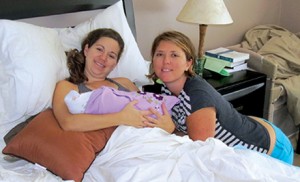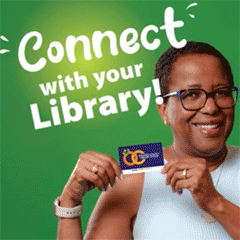Certified Midwives Deliver In-Home or In-Hospital Birth Options
 When Shauna Nobile became pregnant with her son Miles, now 3, she decided to pursue a natural homebirth with a midwife. The Port St. Lucie teacher had recently watched The Business of Being Born, a documentary comparing various childbirth methods, and, despite having received fertility treatment from an obstetrician, she sought care from Angela Love, a Treasure Coast certified nurse-midwife.
When Shauna Nobile became pregnant with her son Miles, now 3, she decided to pursue a natural homebirth with a midwife. The Port St. Lucie teacher had recently watched The Business of Being Born, a documentary comparing various childbirth methods, and, despite having received fertility treatment from an obstetrician, she sought care from Angela Love, a Treasure Coast certified nurse-midwife.
“I loved Angie from the minute I met her,” Nobile said. “Thinking about my annual exams with my OB, I knew my pregnancy check-ups with him would be just that. With Angie, the hour-long appointments were never rushed.” Love, who delivers approximately 44 babies annually and only offers homebirth, became a midwife following a career as a labor-and-delivery nurse in Miami. Love explained, “The things I saw there and the high C-section rate inspired me to be a midwife.”
Births performed by midwives are on the rise. According to reports from the Centers for Disease Control and Prevention, nearly 12% of all vaginal births in the U.S. in 2011 were attended by a midwife, up from 9% in 2000. Recent data collected by the Midwives Alliance of North America Statistics Project found that homebirths are comparatively as safe as hospital births among low-risk American women (and their infants). The study found that: 93.6% of the homebirth participants had spontaneous vaginal deliveries, and 5.2% required a cesarean section. Of the 1,054 women who had previously given birth by cesarean section, 87% had a successful vaginal birth.
More than 89% successfully gave birth at home, while only 11% required transport for medical treatment. Of those receiving additional care, the majority were for “failure to progress,” i.e. labor was proceeding slowly and augmentation of the labor may have been needed.
Only 1.5% of the babies had a low Apgar score, a measure of how healthy the newborn is in the first five minutes following birth.
So, what is a certified nurse-midwife (CNM)? Corinne Audette, a certified nurse-midwife with Winnie Palmer Hospital for Women and Babies in Orlando, explains that, “CNMs work collaboratively alongside physicians and other members of the healthcare team to provide personalized care to women. Although CNMs are typically thought of within the context of pregnancy, birth, and postpartum care, they offer a range of services during all stages of life, including routine health check-ups, gynecologic care, and more.”
According to Audette, CNMs are formally educated in both nursing and midwifery through programs at accredited institutions and, as a result, must obtain a minimum of a master’s degree and pass a national certification exam from the American Midwifery Certification Board (AMCB). Like other healthcare professionals, CNMs are required to undergo continuing education courses and obtain re-certification every five years. “CNMs are ideal for women who want a healthcare experience that’s tailored to their unique preferences. While some healthcare providers may take a more standardized ‘one-size-fits-all’ approach, CNMs place special emphasis on each woman’s situation and values,” says Audette. “For this reason, patients receive an excellent standard of care, while gaining flexibility in determining how they want their healthcare needs met.” According to the American College of Nurse Midwives (ACNM), 98% of midwife-attended births take place in a hospital setting; however, midwives frequently practice in other settings, including clinics, birth centers and, like Love, in private homes.
 After experiencing a “horrendous” birth with her son in 2009, including induction at her obstetrician’s urging and a botched epidural, Stacy Benner knew there had to be another way to give birth. “As a first-time mom, you put yourself at the mercy of medical professionals,” Benner said. “They treat birth and pregnancy as an illness. They didn’t teach me to trust my body; they taught me to fear it,” reflected Benner. “The way that I’ve coped with it is by talking to other women to help them prevent that same experience.” It was during counseling to overcome her unpleasant birth experience that Benner worked at the Crisis Pregnancy Center in Lakeland and met Audette. “I’m trying to change the opinion of what happens at the hospital, instead of going to the hospital and feeling strapped to a bed,” Audette clarified, adding that she offers her patients the opportunity to deliver twins vaginally, water labor, hypnobirthing, and walking during labor while monitored (in a hospital setting). “I’m the only midwife birthing twins,” she said. “I’m sought out by women who are looking for someone who will respect their options.”
After experiencing a “horrendous” birth with her son in 2009, including induction at her obstetrician’s urging and a botched epidural, Stacy Benner knew there had to be another way to give birth. “As a first-time mom, you put yourself at the mercy of medical professionals,” Benner said. “They treat birth and pregnancy as an illness. They didn’t teach me to trust my body; they taught me to fear it,” reflected Benner. “The way that I’ve coped with it is by talking to other women to help them prevent that same experience.” It was during counseling to overcome her unpleasant birth experience that Benner worked at the Crisis Pregnancy Center in Lakeland and met Audette. “I’m trying to change the opinion of what happens at the hospital, instead of going to the hospital and feeling strapped to a bed,” Audette clarified, adding that she offers her patients the opportunity to deliver twins vaginally, water labor, hypnobirthing, and walking during labor while monitored (in a hospital setting). “I’m the only midwife birthing twins,” she said. “I’m sought out by women who are looking for someone who will respect their options.”
When Benner became pregnant with her daughter, now 3, she chose Audette to deliver baby Abigail. “I had an advantage in that she was my best friend at the time. I felt empowered going into the birth,” Benner declared. “It was euphoric. It completely made up for everything that happened during my first delivery.” Both Love and Audette say the women who use midwives to deliver their babies come from all walks of life. “Sometimes people think women who want homebirths are hippies who are very granola,” said Love. “I get some of those (women) but I also get physicians or women who are on their second or third births who didn’t like their previous experiences.”
Audette says, “CNMs are experts in recognizing unusual or complicated issues that may require a physician’s consultation. In the event a woman needs to undergo a cesarean birth, the midwife will play a supporting role to the physician who performs the surgery.” Nobile, who had hoped for a homebirth, ended up with a hospital birth as a result of her son being breech – Love didn’t have experience at the time with breech births – though she later returned to her midwife for the homebirth of her daughter, Ruby Quinn. “Even if I had known with 100% certainty that I would have a hospital birth again, I still would have used Angie and just gone to the hospital for the delivery,” Nobile said. “I think of her more like a friend than just my midwife.” To learn more, visit Midwife.org.











